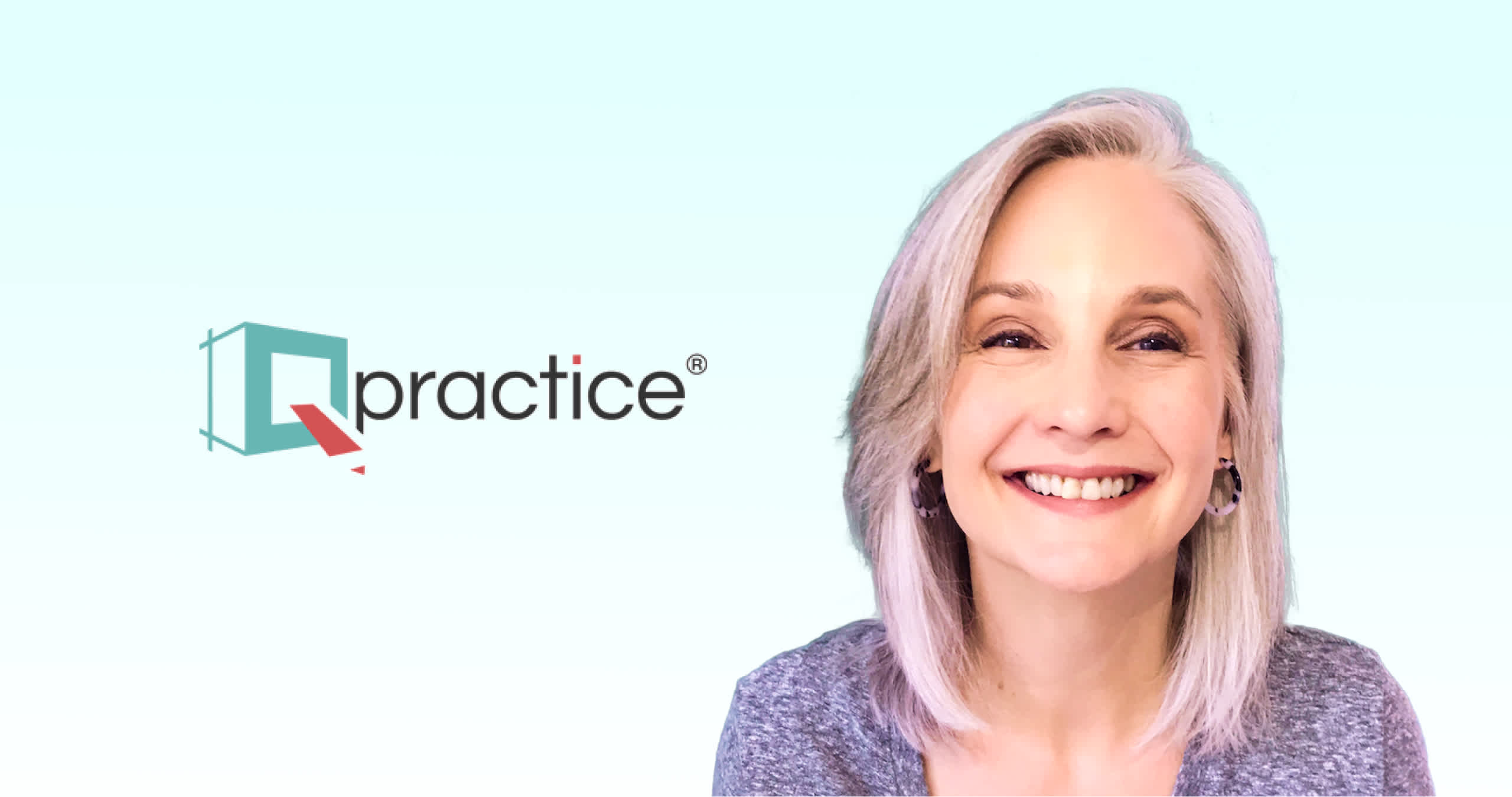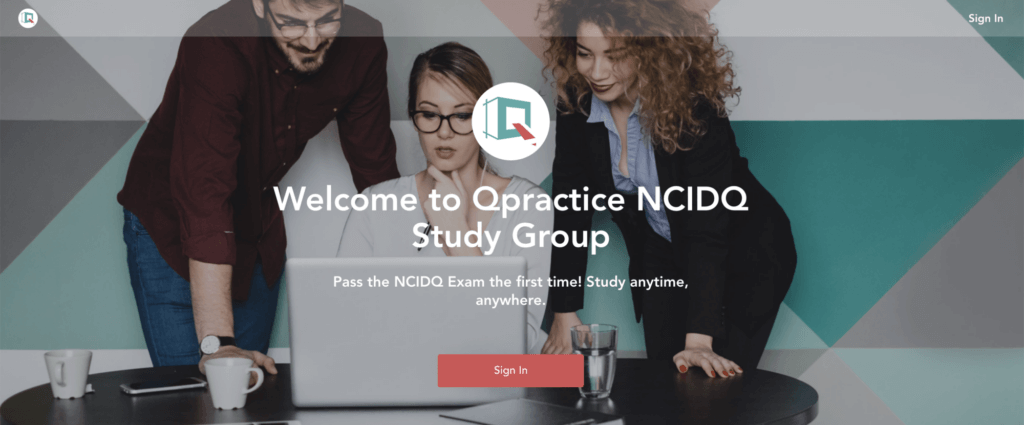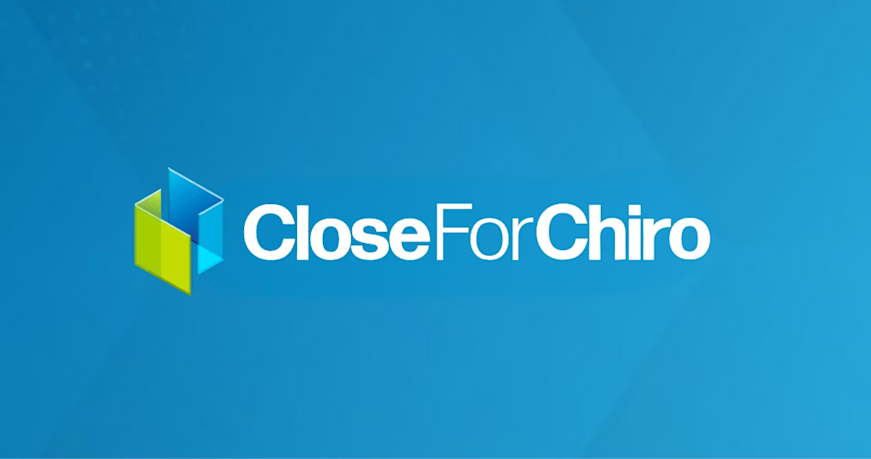Career
How Qpractice's cohort-based courses are giving interior designers the confidence to ace their exams

Qpractice is a paid membership site that gives interior designers the tools and know-how to pass the NCIDQ exam, a certification that’s required for most practicing designers in North America.
Topic
Career
Mighty Plan
The Courses Plan
Offering
Paid Membership
Courses
Topic
Career
Mighty Plan
The Courses Plan
Offering
Paid Membership
Courses
Table of Contents
As a certified interior designer herself, Lisa League knew that acing the National Council for Interior Design Qualification (NCIDQ) exam was no walk in the park.
She was determined to make it easier for her fellow designers to pass.
She had struggled when it came to studying for her own exam. There weren’t many resources—online or otherwise—to help interior designers prepare, and the resources that did exist were frustratingly limited:
She started by creating a dedicated study group on LinkedIn. But managing her members there was a hassle, so she started her search for a community platform again.
At the same time, Lisa had started taking a software development course with Skillcrush. As she perused the site’s community, which was then run via Mighty Networks, she was impressed with the platform’s features.
She decided then and there that it was the perfect fit for the community that she was trying to build.
With a Mighty Network, Lisa could give interior designers the opportunity to learn from each other. She could provide a space where designers would be able to share their experiences and harness their fellow members’ expertise. And it would be a breeze on a platform that was instantly available on the web and native mobile apps.
Just like that, the Qpractice Study Group was born.
A diversity of designers, a diversity of perspectives
Lisa hit the ground running. She started by sketching out a 10-week plan, then got to work publishing lessons, running practice tests, and creating all of her content “live,” or as she went:
At the same time, she worked on bulking up her email list to see what kind of audience she could build up. Fortunately, she already had an idea of what her ideal members looked like.
From the beginning, Lisa knew she wanted to bring in a diverse group: designers who were taking the test for the first time; designers who had passed only one or two of the NCIDQ exam’s three tests; and designers who had taken the test multiple times:
She would also be able to help different kinds of interior designers:

As her email list grew, Lisa singled out the people who interacted with her emails the most. From there, she reached out to them and interviewed them about their biggest challenges preparing for the NCIDQ exam. What she heard was enlightening:
Based on those interviews with her ideal members, Lisa and her team adjusted their priorities, shifting to make Qpractice a space where interior designers could be taught to learn from their mistakes—both people who had taken the exam and passed, and those who hadn’t:
With her ideal members in place, Lisa started selling access to her group.
Qpractice study hall is now in session
Today, Qpractice is home to over 700 members. And while the membership inherently ebbs and flows, Lisa finds that a good number of her members come back periodically:

To keep things organized, Lisa creates a study schedule at the top of the year, and organizes everything around the NCIDQ exam dates. For the annual exam offered in April, Qpractice’s study hall begins in January. For the annual exam offered in October, it begins in July.
No matter when new members start, Lisa offers bundled monthly subscriptions on the main Qpractice site. When members enroll at the premium level, priced at $149 per month, they get access to the Qpractice Study Group (which lives in Lisa’s Mighty Network), as well as resources and courses which live both in the Mighty Network and the main Qpractice website.
The Study Group offers access to QPractice’s Mighty Network as well as the following:
Live workshops
Qpractice hosts three courses that Lisa and her team run as live workshops, both within the Mighty Network and on the main site. Each workshop corresponds to NCIDQ’s exam sections—IDFX, IDPX, and PRAC—with Lisa and her team reviewing the official practice tests from CIDQ; offering question-by-question review, discussion, and answers; and providing test-taking strategies. Each workshop also includes an archive of past live workshops that Lisa makes visible afterwards.
Study group discussion
For each lesson within Qpractice’s live workshops, Lisa directs members to a discussion thread within a specific Topic. Each of the Topics in Qpractice corresponds to a module on the exam, like ALL-Programming & Site Analysis and ALL-Designed Environment Codes & Standards.
Office hours
Every two weeks, Lisa uses YouTube Live to host an office hour session, where members are encouraged to ask questions and engage directly with her.
Answer vault Lisa and her team later repurpose the content from the office hours webinar to create new resources, organized by topic and exam. Members have access to these bite-sized video answers for quick reference.

Lisa also puts a lot of emphasis on participation. She uses icebreaker questions to give new members the opportunity to dive in immediately by sharing which exam they’re studying for, why they’re taking it, and what they’re hoping to get out of the process.
To help her members get the most out of Qpractice for the long run, Lisa encourages them to download the Mighty Networks on their mobile devices and make the study group their go-to social media app:
A community designed with ongoing support in mind
With Qpractice going on seven years and counting, Lisa’s main observation about the community is that the people who are the most committed to it get the most out of it:
With respect to the future, Lisa is exploring ways to keep members engaged even after they pass their exams. She’s planning to add continuing education courses to Qpractice so that members can both share their knowledge with newbies and continue supporting and inspiring each other:
3 key takeaways from Qpractice’s Story of Awesome
Get in touch with your ideal members early. By interviewing her ideal members, Lisa was able to shift her offering to be more in line with what they wanted. Interview the people who will get the most out of your community, get to know what they need, then design your solution around that.
Jump right in and run it live. You don’t have to have everything created before you get started. Take Lisa’s lead and create content as you go, adjusting to members’ feedback.
Guide your members where you want them to go. Lisa encourages her members to take advantage of the Mighty Network app and make Qpractice a habit. If you’ve found that your members are more likely to succeed by taking a certain path, help them find their way.


